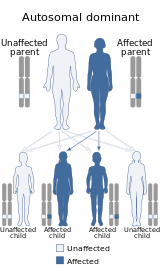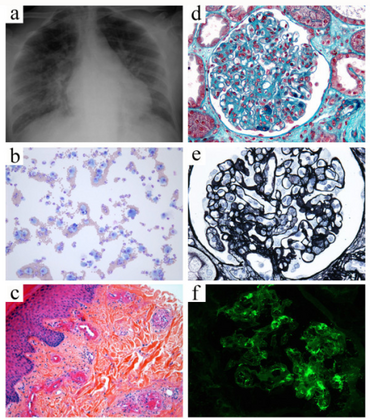Cryoglobulinemic vasculitis
| Cryoglobulinemic vasculitis | |
|---|---|
| Other names: Essential mixed cryoglobulinemia, Primary cryoglobulinemia[1] | |
 | |
| Cryoglobulinemic vasculitis is inherited in an autosomal dominant manner | |
| Specialty | Dermatology |
Cryoglobulinemic vasculitis is a form of inflammation affecting the blood vessels caused by the deposition of abnormal proteins called cryoglobulins in the blood vessels, in patients affected by mixed cryoglobulinemia (type 2 and 3), since simple or type 1 cryoglobulinemia does not cause complement activation (but a hyperviscosity syndrome only). Cryoglobulinemic vasculitis affects the skin and causes a rash in roughly 15% of people with detectable circulating cryoglobulin proteins.[2]: 835 Additionally, the kidneys may be affected by this form of vasculitis resulting in membranoproliferative glomerulonephritis. Fevers, painful muscles and joints, and peripheral nerve damage are other common manifestations of cryoglobulinemic vasculitis. Due to deposition of complement (in particular, C4), low levels of circulating complement factors may be seen.

See also
References
- ↑ RESERVED, INSERM US14-- ALL RIGHTS. "Orphanet: Cryoglobulinemic vasculitis". www.orpha.net. Archived from the original on 20 January 2021. Retrieved 19 April 2019.
- ↑ James, William D.; Berger, Timothy G.; et al. (2006). Andrews' Diseases of the Skin: clinical Dermatology. Saunders Elsevier. ISBN 978-0-7216-2921-6.
External links
| Classification | |
|---|---|
| External resources |